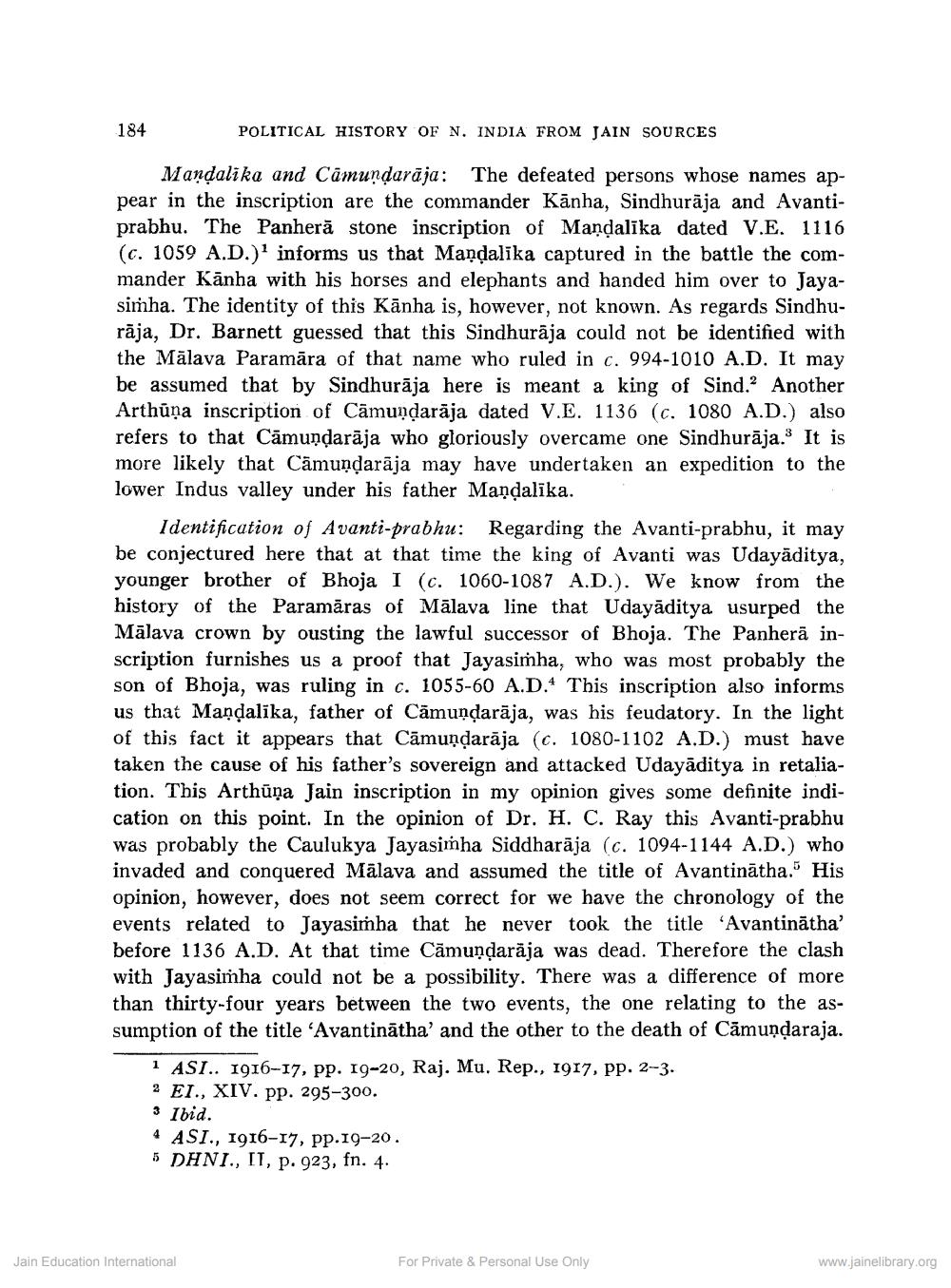________________
184
POLITICAL HISTORY OF N. INDIA FROM JAIN SOURCES
Mandali ka and Cāmundarāja: The defeated persons whose names appear in the inscription are the commander Kānha, Sindhurāja and Avantiprabhu. The Panheră stone inscription of Mandalīka dated V.E. 1116 (c. 1059 A.D.)' informs us that Mandalika captured in the battle the commander Kānha with his horses and elephants and handed him over to Jayasimha. The identity of this Kānha is, however, not known. As regards Sindhurāja, Dr. Barnett guessed that this Sindhurāja could not be identified with the Mālava Paramāra of that name who ruled in c. 994-1010 A.D. It may be assumed that by Sindhurāja here is meant a king of Sind? Another Arthūņa inscription of Cāmundarāja dated V.E. 1136 (c. 1080 A.D.) also refers to that Cāmundarāja who gloriously overcame one Sindhurāja. It is more likely that Cāmundarāja may have undertaken an expedition to the lower Indus valley under his father Mandalika.
Identification of Avanti-prabhu: Regarding the Avanti-prabhu, it may be conjectured here that at that time the king of Avanti was Udayāditya, younger brother of Bhoja I (c. 1060-1087 A.D.). We know from the history of the Paramāras of Mālava line that Udayāditya usurped the Mālava crown by ousting the lawful successor of Bhoja. The Panherā inscription furnishes us a proof that Jayasimha, who was most probably the son of Bhoja, was ruling in c. 1055-60 A.D. This inscription also informs us that Mandalika, father of Cāmundarāja, was his feudatory. In the light of this fact it appears that Cāmundarāja (c. 1080-1102 A.D.) must have taken the cause of his father's sovereign and attacked Udayāditya in retaliation. This Arthūņa Jain inscription in my opinion gives some definite indication on this point. In the opinion of Dr. H. C. Ray this Avanti-prabhu was probably the Caulukya Jayasimha Siddharāja (c. 1094-1144 A.D.) who invaded and conquered Mālava and assumed the title of Avantinātha. His opinion, however, does not seem correct for we have the chronology of the events related to Jayasimha that he never took the title 'Avantinātha' before 1136 A.D. At that time Cāmundarāja was dead. Therefore the clash with Jayasimha could not be a possibility. There was a difference of more than thirty-four years between the two events, the one relating to the assumption of the title 'Avantinātha' and the other to the death of Cāmundaraja.
1 ASI.. 1916-17, pp. 19-20, Raj. Mu. Rep., 1917, pp. 2--3. 2 EI., XIV. pp. 295-300. 3 Ibid. 4 ASI., 1916-17, pp. 19-20. 5 DHNI., II, p. 923, fn. 4.
Jain Education International
For Private & Personal Use Only
www.jainelibrary.org




